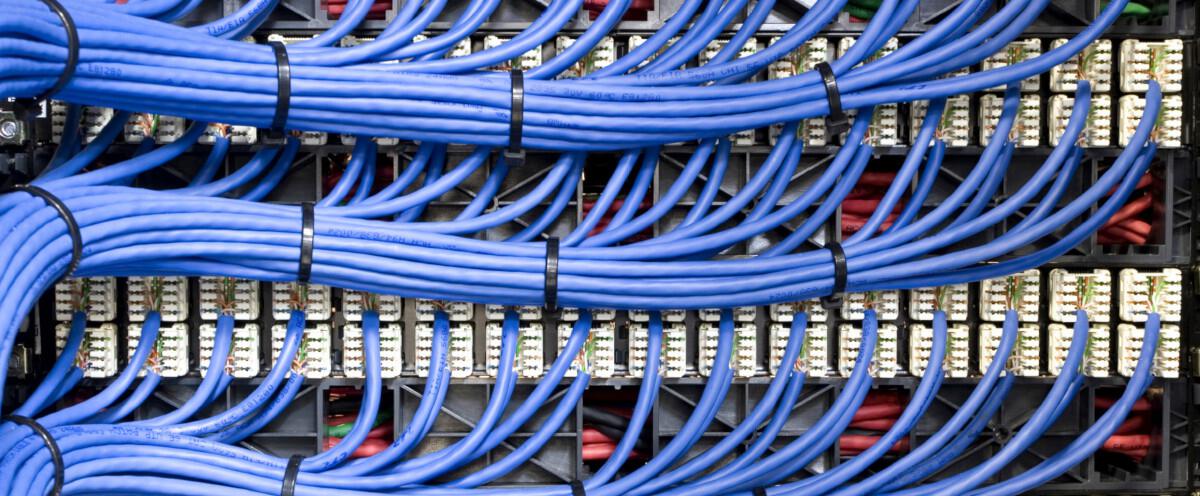What Are the Benefits of a Structured Cabling System
July 17th, 2023 by admin

A robust and reliable cabling infrastructure cannot be overstated in today's rapidly evolving digital landscape, where seamless connectivity and efficient data transmission are vital for businesses. Enter structured cabling systems—a well-organized, standardized approach to the network infrastructure that provides numerous benefits for businesses of all sizes.
Structured cabling refers to a comprehensive framework of cables, connectors, and associated hardware that supports the transmission of data, voice, and video signals throughout an organization. Unlike traditional point-to-point cabling systems, which can become tangled and difficult to manage, structured cabling takes a systematic approach to network design and implementation.
This article aims to shed light on the various advantages offered by a structured cabling system. From enhancing network performance and scalability to reducing downtime and simplifying maintenance, a well-designed structured cabling infrastructure is a valuable asset for businesses seeking to optimize their communication networks.
By implementing a structured cabling system, organizations can ensure that their network infrastructure not only meets their current needs but also possesses the flexibility to accommodate future technological advancements and expansions. Let us delve deeper into the specific benefits that make structured cabling an indispensable choice in today's interconnected world.
Benefits of a Structured Cabling System
- Enhanced Network Performance:
One of the primary advantages of a structured cabling system is improved network performance. By organizing cables into a structured layout, signal interference and crosstalk are minimized, resulting in higher data transfer rates, reduced latency, and enhanced overall network efficiency.
This optimized performance translates into faster data transmission, improved productivity, and a more seamless user experience.
- Scalability and Future-Proofing:
Businesses are constantly evolving, and their network requirements evolve with them. Structured cabling provides scalability, allowing organizations to easily add or relocate devices and equipment without disrupting the entire network infrastructure.
With the ability to accommodate higher bandwidths and support emerging technologies, such as cloud computing, Internet of Things (IoT), and high-definition multimedia, structured cabling systems offer a future-proof solution that can adapt to changing business needs.
- Simplified Network Management:
Managing a complex network becomes significantly easier with a structured cabling system. The organized design enables IT professionals to quickly identify, isolate, and troubleshoot connectivity issues, minimizing downtime and reducing the time and effort required for maintenance and upgrades.
Additionally, structured cabling simplifies moves, adds, and changes (MACs), as any modifications can be made swiftly and efficiently, ensuring minimal disruption to ongoing operations.
- Cost and Time Efficiency:
While the initial investment for implementing a structured cabling system may be higher compared to traditional cabling methods, it offers substantial cost savings in the long run. The standardized infrastructure reduces the need for extensive cabling upgrades or rewiring when expanding or reconfiguring the network.
Moreover, the streamlined installation process and simplified maintenance result in shorter downtimes, minimizing productivity losses and associated costs.
- Improved Reliability and Resilience:
A structured cabling system is designed to provide high levels of reliability and resilience. The separation of power and data cables reduces the risk of electrical interference, ensuring stable and uninterrupted network performance.
Furthermore, a well-organized cabling infrastructure minimizes the chances of accidental damage, cable tangling, or human error, leading to improved system uptime and increased overall network stability.
- Adaptability and Flexibility:
Modern business environments require agility and adaptability. Structured cabling offers the flexibility to support various applications and services simultaneously, allowing organizations to efficiently integrate voice, data, video, and other emerging technologies onto a single infrastructure.
This adaptability makes it easier to adopt new communication tools, collaborate across different platforms, and meet evolving business demands without the need for extensive infrastructure changes.
In conclusion, a structured cabling system presents numerous benefits for organizations seeking a reliable, scalable, and efficient network infrastructure. From improved performance and flexibility to simplified management and cost savings, the advantages of structured cabling contribute to the seamless connectivity and optimized operations necessary for success in today's interconnected world.
Looking to take your business connectivity to the next level? Say hello to the wonders of a structured cabling system! It offers enhanced performance, the ability to future-proof your network, simplifies network management, reduces cost and time efficiency, offers reliability, and adaptability and flexibility.
If you want to learn more about the benefits of a structured cabling system, contact us today.
Posted in: Solutions

